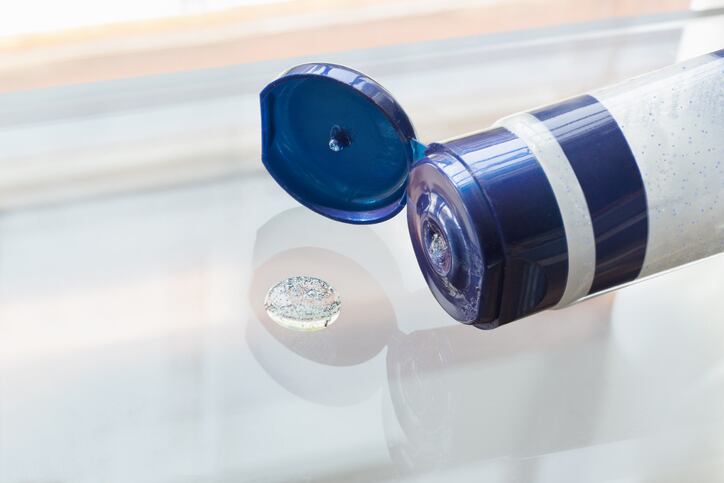The European Union’s Registration, Evaluation, Authorisation and Restriction of Chemicals (REACH) regulation has several substance restrictions under consideration relevant to beauty and personal care, with entry into force expected for 2020 and 2021.
REACH relevant to cosmetics and personal care
Addressing attendees at the Cosmetics Consultants Europe (CCE) 2019 Open Academy this week in Limassol, Cyprus, Tasoula Kyprianidou, head of chemicals for the Department of Labour in the Cyrpus Government, said there were currently 73 restrictions in Annex XVII of the REACH Regulation – the ‘Restricted Substance’ list, with ongoing considerations on more.
“Restrictions is a very actively changing part of REACH. Every year we have proposals for new restrictions – three, four or five proposals which pass through this long process of discussion at the European Chemicals Agency [ECHA] Committees, open dialogue and then the final document that should be voted and adopted by the Member States,” Kyprianidou said.
“It’s a very long procedure; it usually takes one to two years to have a new restriction.”
Kyprianidou said while the REACH regulation covered wide-reaching use of chemicals across numerous industries, there were many relevant to the cosmetics and personal care space and, importantly, a handful of substances currently under consideration to know about.
Restrictions on microplastics in consumer and professional products; use of tattoo inks and permanent make-up; and restrictions on use of D4, D5 and D6 cyclic siloxanes were all set to enter into force within the next three years.
Microplastic REACH restriction – this affects microbeads
The restriction on intentionally added microplastics particles sized of 1-5mm will be limited to 0.01%* in consumer and professional products of any kind. Kyprianidou said this restriction applied to microbeads in cosmetics products and the expected entry into force was 2021, with a six-year transition period.
The full Annex XV Restriction Report for Intentionally Added Microplastics was published in August, outlining all the details and reasons behind the upcoming restriction.
“Microplastics are extremely persistent in the environment, are difficult to remove once they are there (irreversibility) and are continuing to be added to the environment (stock effects),” the report said.
For cosmetic products, the report noted there was no transitional arrangement expected for microbeads used in rinse-off products – microplastics for exfoliating or cleansing functions – because industry was expected to have “voluntarily phased out their use by 2020”. But for microplastics in other rinse-off and leave-on cosmetics products, a transitional phase of four to six years would be applied.
Tattoo ink and permanent make-up – to affect about 4,000 substances
Kyprianidou said another upcoming restriction important for the cosmetics sector and tackling “a big issue” was on tattoo inks and permanent make-up (PMU).
The regulation, she said, would apply to about 4,000 substances – most considered Carcinogenic, Mutagenic or Toxic to Reproduction (CMR) substances.
“Several of these substances are already restricted under the Cosmetics Regulation but REACH will come as a complementary legislation to cover this issue,” she said.
Entry into force was expected to take place in 2020 with special labelling obligations imposed under the restriction. A call for evidence was launched back in 2016 to gather information from all relevant stakeholders on tonnages, release and exposure, costs, services and issues related to enforceability and alternatives ahead of the prepared restriction.
D4, D5 and D6 cyclic siloxanes – this affects leave-on and rinse-off
Kyprianidou said industry also had to be aware of the recently announced upcoming restriction on D4, D5 and D6 cyclic methyl siloxanes in consumer and professional products, stating use should not exceed 0.1%.
“The types of cosmetics affected are leave-on, or rinse-off that are not washed off with water, for example impregnated tissues, pads and wipes,” she said.
These cyclic siloxanes were often known as ‘flyers’ – “known to be very volatile”, she said, and of concern from an environmental perspective. Details on the upcoming restriction were outlined in the recently published Annex XV Restriction Report for D4, D5 and D6.
“D4, D5 and D6 are substances with PBT [persistence, bioaccumulation and toxicity] and/or vPvB [very persistence and very bio-accumulative] properties. PBT/vPvB substances give rise to specific concerns based on their potential to accumulate in the environment and cause effects that are unpredictable in the long-term and are difficult to reverse even when releases cease,” the report stated.
While D4 and D5 were already restricted in wash-off cosmetics, the report said the “wide dispersive use of D4, D5 and D6 in cosmetic products remains the main source of releases” warranting further restriction. The report said reformulation or transition to alternatives was “considered to be feasible if sufficient transition time is given”.
Entry into force on restricted use of cyclic siloxanes was expected for 2021 on all types of products and the matter was currently open to public consultation.
* This article was edited on November 12 to correctly outline that the proposed restriction is microplastics should not exceed concentrations of 0.01% in a formulation, not the 1% originally reported




